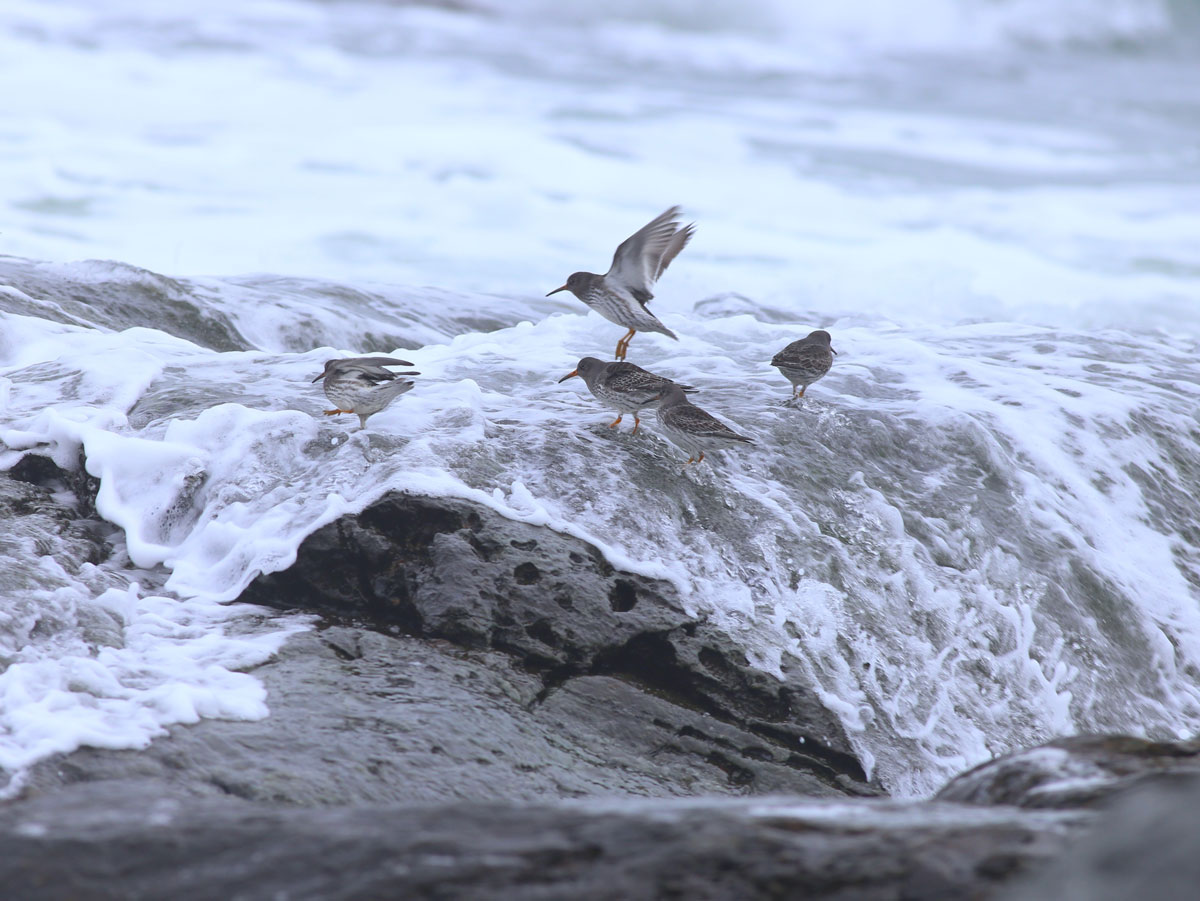
Brad Winn
VICE PRESIDENT, RESILIENT HABITATS
If you live in the northern latitudes of North America, the next time a winter storm is howling outside of your house at night, with temperatures well below freezing and snow blasting sideways, imagine what the conditions might be like on your nearest coast. The ocean waves will be smashing the shore in darkness, saltwater spray will be carried on the wind to coat the beach and rocks with ice. If it’s really cold, the ocean itself might be a slush-ice slurry, pushing high on local beaches with each wave. You might be surprised that out there, in the storm’s dark gloom hunkered against the wind and pounding surf, in life challenging conditions, are some very tough little birds.
Three species of shorebird are wintering standouts in the northeastern US and Atlantic Canada: Purple Sandpiper, Dunlin, and Sanderling can do very well in our intertidal margins all winter long. Other species too can be found in smaller numbers like Red Knot, Ruddy Turnstone, and Black-bellied Plover on the New England shores. If you happen to live in Alaska, or along the coast of British Columbia, Rock Sandpipers are at the top of the list, with Surf Birds, and Black Turnstones are also capable of weathering some very tough conditions in the Gulf of Alaska. The abundance and availability of food found between high and low tide is what keeps these birds alive. The intertidal zone that is exposed and flooded twice a day, provides these shorebirds with the nutrition they need to maintain fat reserves and feather condition to beat back the cold. From the broader perspective, coastal ecosystem health is fueling the engines inside these rugged little birds.

Shorebirds tend to be opportunistic in what they eat, and the most abundant invertebrates under the surface of the intertidal sediments will do – polychaete worms, clams, and amphipods are all prey. But some are seasonal specialists. The winter food of choice in Alaska is one specific kind of clam. Dan RuthRauf and coauthors (Ruthrauff et al. 2018) studied the energetics of the wintering Rock Sandpipers in Cook Inlet Alaska and discovered that they feed on one species of Macoma clam. The birds select the smaller clams, with higher meat to shell ratios for the most efficient eating. Dan was kind enough to share the wintering Rock Sandpiper photo with us for this eNews piece. Many sandpipers, including the Rocks, Red Knot, and others, will eat the clams whole, and let their gizzards do the crushing and “chewing” after ingestion.

From the little we know about the diets of shorebirds in the New England winter, everything from small fish to cold-shocked moon snails are consumed. Cold water temperatures can stun and kill entire colonies of intertidal creatures. When this happens, shorebirds find a bonanza of cold-shocked shrimp, snails drooping from their shells, gaping scallops, and big surf clams, wide open after getting zapped by sub-freezing temperatures. The Purple Sandpipers, rock dwelling specialists, not only feed on the invertebrates clinging and crawling on the rocks, but also use their bills to shave the algae layer right off the rocks.
So next time your windows are rattling in the winter wind, and temperatures are well below freezing, and you are thankful for the layers of blankets keeping you warm, consider the puffed-out shorebirds, standing on one leg, leaning into the winter gale off of the ocean, dreaming of the day they can migrate north again to breed on the rocky barrens of the Arctic.
Energetic solutions of Rock Sandpipers to harsh winter conditions rely on prey quality. Ruthrauff, D. R., Dekinga, A., Gill, R. E., & Piersma, T. 2018. IBIS. DOI: 10.1111/ibi.12534





 Back to all
Back to all